The Politics of Memory in Latin America and Beyond …
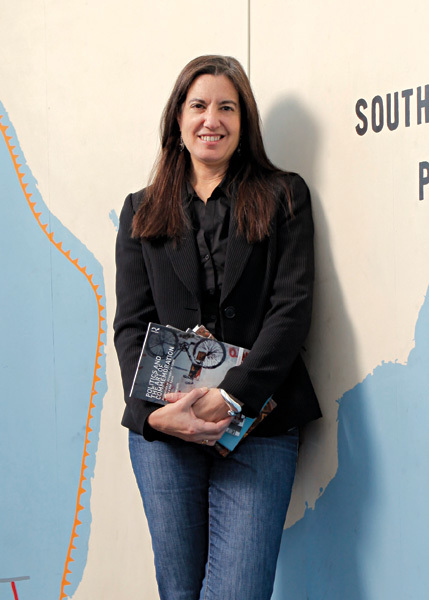
If you want to talk to Katherine Hite, Professor of Political Science on the Frederick Ferris Thompson Chair, you can expect a little bit of a hike. She’s on the fourth floor of Rockefeller Hall in a closet of an office, with an idyllic, ivory-tower view of the campus. Seemingly far above the fray—but actually very much in the thick of it.
A scholar of Latin American politics, particularly the dictatorial regimes that re-democratized in the late 20th century, Hite is passionately interested in political struggles and progressive social movements. The daughter of socialists, she spent most of her growing-up years in Texas in a household where not just the talk but the action centered around leftist causes—unionizing workers in the oil industry, protesting police brutality against blacks and Latinos, agitating for women’s rights. “My family and I would go to Mexico fairly frequently, and I was fascinated by what was happening on that side of the border,” says Hite. “Leftists could actually be elected to leadership in Latin America! So I’ve been interested in Latin American politics for a long, long time.”
After graduating with a bachelor’s from Duke University, Hite spent three years at a progressive think tank, the Institute for Policy Studies in Washington, DC, before enrolling in the School of International and Public Affairs at Columbia University.
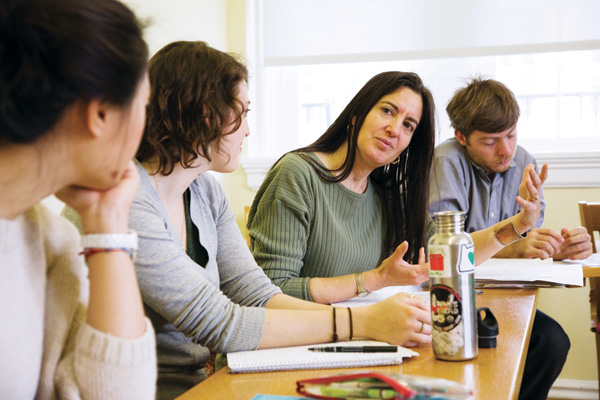
“My plan was to get a master’s and then go back and fight the fight on Capitol Hill against U.S. military aid to El Salvador and the Contra War in Nicaragua,” says Hite. But her professors at Columbia convinced her to continue on for her doctorate. “I never imagined that I would be a professor,” she says, “but right after I defended my dissertation and was working at the Institute of Latin American Studies at Columbia, the job here at Vassar was posted, and I thought, ‘That would be a neat place to be.’”
Hite says that when she first came to Vassar 15 years ago, she had no idea how hard it was to be a good teacher. “My graduate school was not a place that taught you how to be a teacher,” she says. “It was assumed that you were going to be a scholar and that you taught because you had to. So the hardest thing about the first few years for me was finding my teaching voice, my pedagogical voice. I looked at great teachers on campus and realized that you can’t just replicate what they do because how they teach is inextricably connected to who they are. So I had to figure out what my own pedagogical voice is, and I think it’s a combination of intellectual rigor and a sense of humor. I think, for me, these two elements are keys to being a good teacher—and being passionate about my work.”
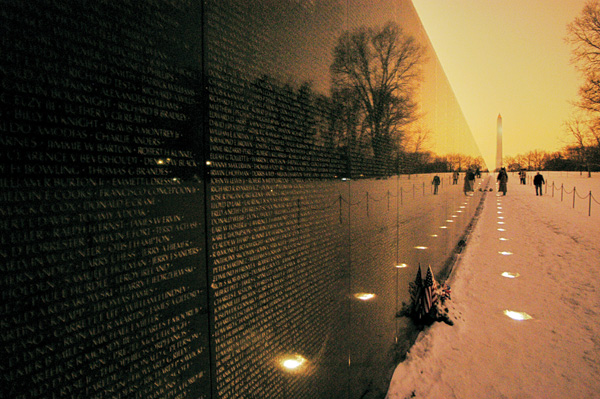
In addition to courses on Latin American politics, Hite teaches introductory political science, a course on modern social movements, and a senior seminar on political violence. Her courses are typically fully subscribed, and often over-subscribed. It’s probably safe to say that any Vassar student with a strong interest in social justice has taken at least one class with Hite. “She’s a fabulous teacher,” says Juan Thompson ’13, a former political science student. “I took four classes with her.”
Thompson is working as a freelance writer in Chicago, pending entrance into the University of Chicago Law School on full scholarship next fall. He’s working on an article for Chicago magazine about the movement to push for a living wage for fast-food workers. “The reason I’m doing what I’m doing now is because of her social movements class,” he says. “I learned from that class that you can’t create social change without a vehicle—like the press—to bring these issues to the forefront and put them before the public. One of the books we read was Saul Alinsky’s Rules for Radicals—his bible for left wing organizing. That book really helped me form my ideas for my own mode of social justice work.”
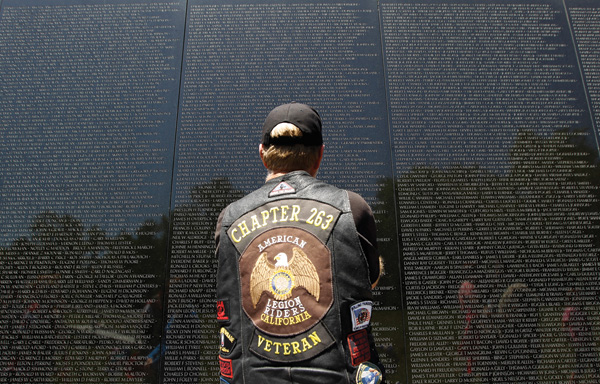
Naomi Dann ’14, an independent major in peace and justice studies, is enrolled in Hite’s seminar on political violence. “What’s really interesting about the seminar is that she treats it partly as a class about theories of violence and trauma and also partly as an opportunity for her as an academic and for us as up-and-coming academics to work through our own issues and questions about violence and trauma,” says Dann. “We each have individual projects we’re working on, and it’s been really, really helpful to be able to bring those into the class and incorporate them into the discussion.”
Dann, who is the president of the Vassar Jewish Union and also a member of a student organization called Students for Justice in Palestine, is working on a project about the transgenerational transmission of fear and trauma in Israel and the Middle East. “I’m looking at the Jewish narrative of victimization and this idea that Israel is the guarantee of security for the Jewish people and how that fear is producing a lot of violence,” says Dann. “I’ve been talking to Professor Hite about it a lot, trying to work through my own political ideas about the conflict, and also trying to find ways to make the conversation about it on campus a little bit more productive and less antagonistic.”
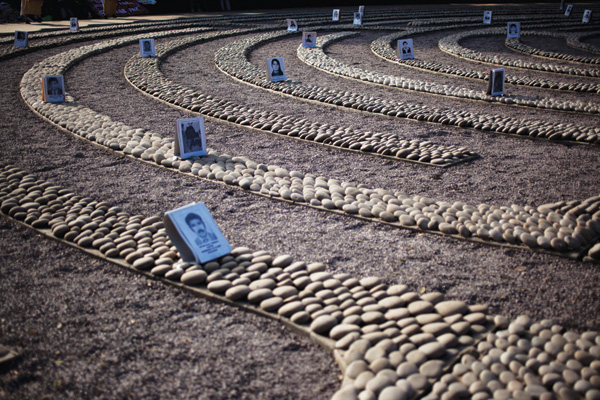
Tough issues. Difficult questions. “Many of us have suffered different kinds of traumas and violences in our lives,” says Hite. “But how do we create safe spaces where we can facilitate concern and conversation and sharing? That’s what I’ve been working to create in the seminar on political violence—a space where we can feel safe enough to share some of our most difficult, intimate violences, in the contexts of both historical and ongoing structural, social, and political violences. And it has been important, cathartic for many students, I think—but tough.”
Hite’s recent scholarly work is on the politics of memory and memorialization, much of which is presented in her book Politics and the Art of Commemoration: Memorials to Struggle in Latin America and Spain (Routledge, 2011), an analysis of four memorials to the thousands who were killed or “disappeared” at the hands of dictatorial regimes in Spain, Peru, Chile, and Argentina. “Since Maya Lin’s Vietnam Veterans Memorial in 1982, there has been a huge upsurge in memorial building around the world,” says Hite. “In Chile today, there are hundreds. Memorials are one way people try to make meaning out of political violence and the loss of loved ones in political struggles. They are an expression of how we relate our past to our present, consciously and unconsciously, and they can open a conversation, sometimes among people who don’t necessarily speak to one another.”
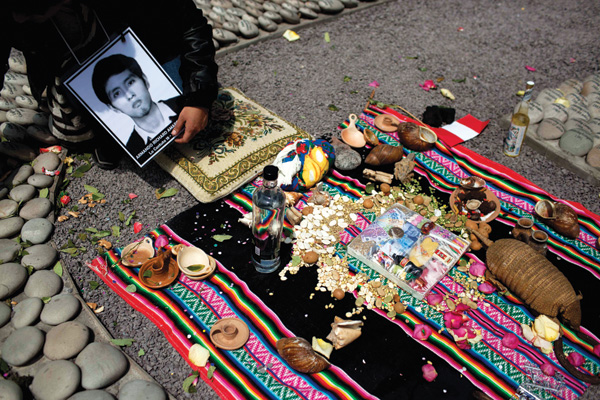
Official, state-sanctioned memorials tend to put forward an official, state-sanctioned narrative—“Yes, it was a nasty business, but we’re better and stronger now”—glossing over state violence and repression. But increasingly, Hite says, we’re seeing memorials initiated by citizen groups as well as counter-memorials that challenge these state-sanctioned narratives and also put forward alternative visions of the future. “These memorials open up conversations about why this happened and why we are where we are. They ask us to imagine a less violent world,” says Hite.
There is, of course, our own memorial and museum to the tragedy of 9/11, slated for completion in the coming year. In a recent post on the Huffington Post’s Arts and Culture blog, Hite and NYU professor Marita Sturken ask whether the National September 11 Memorial and Museum will tell the story as “an exceptional, unique story of a shocking event” or whether it will contextualize the event “within a global political and historical story.” Contextualizing that event within the global history of the struggle for human rights, they argue, “will help us to remember that September 11 is more than just one day.”
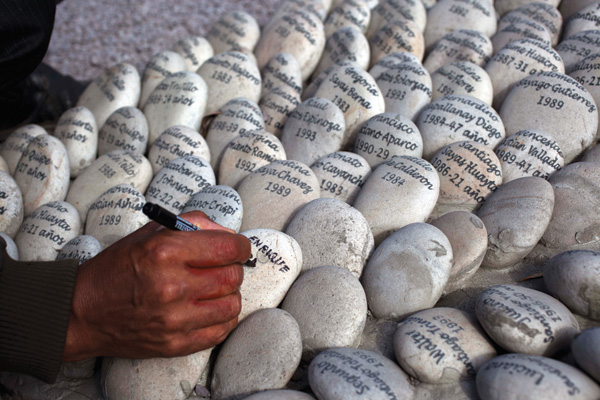
“But it is unclear whether we, as a nation, are prepared to look at the role played by our government in precipitating the attack, or to look at the abuses and violences our government has committed in response to it,” says Hite. “Think about how Susan Sontag and a few others were excoriated in the New Yorker for even raising the question, ‘How could this have happened?’”
There’s no such thing, Hite says, as “closure” on traumatic memories. “But are there ways we can imagine being moved and mobilized by these memorial spaces? Can they help us connect across distances, recognize how we are implicated, move meaningfully forward? I teach the class on political violence, but I also teach the social movements class because I really want students both to be analytically sharp and to feel engaged and ready to struggle for the common good.”
Trauma, violence, racial hatred, gender inequality, food insecurity, economic injustice—this “morass,” Hite says, is the legacy of her generation.
“Yes, you do become discouraged when you first become aware of these issues,” says Thompson. “But a class like Professor Hite’s social movements class gives you hope. I’m optimistic about what can be accomplished in the future, and I’m willing to work for it.”
And that clear-eyed optimism is Katherine Hite’s legacy.
